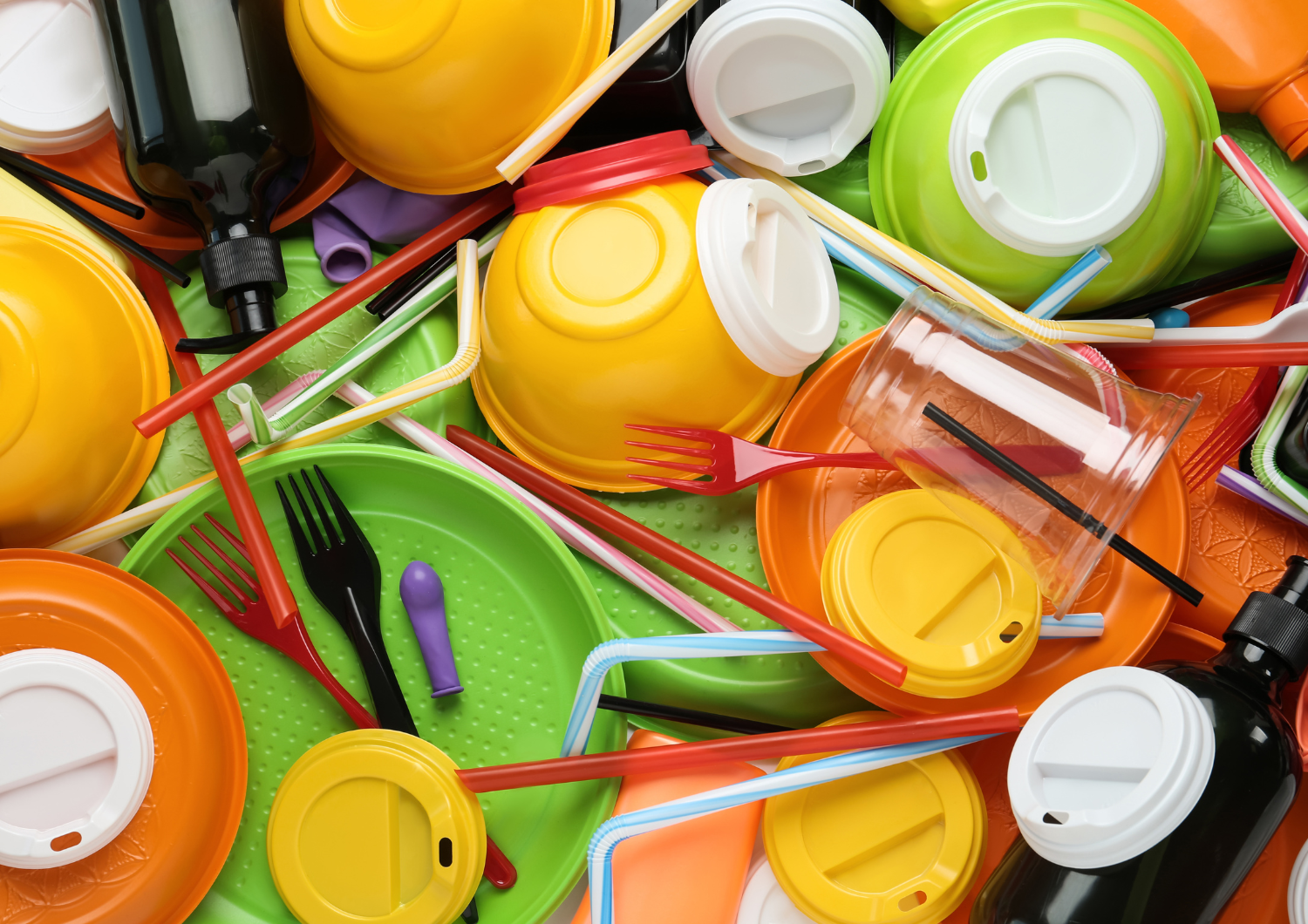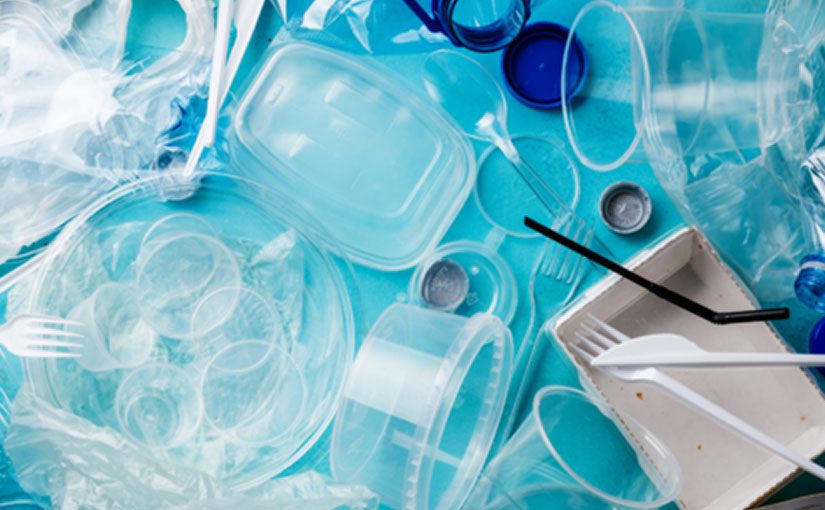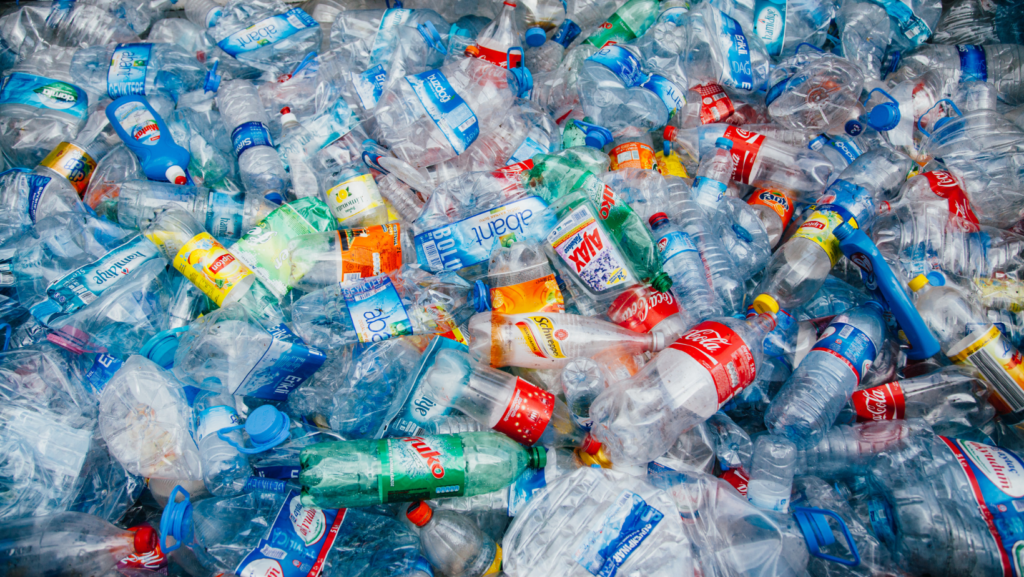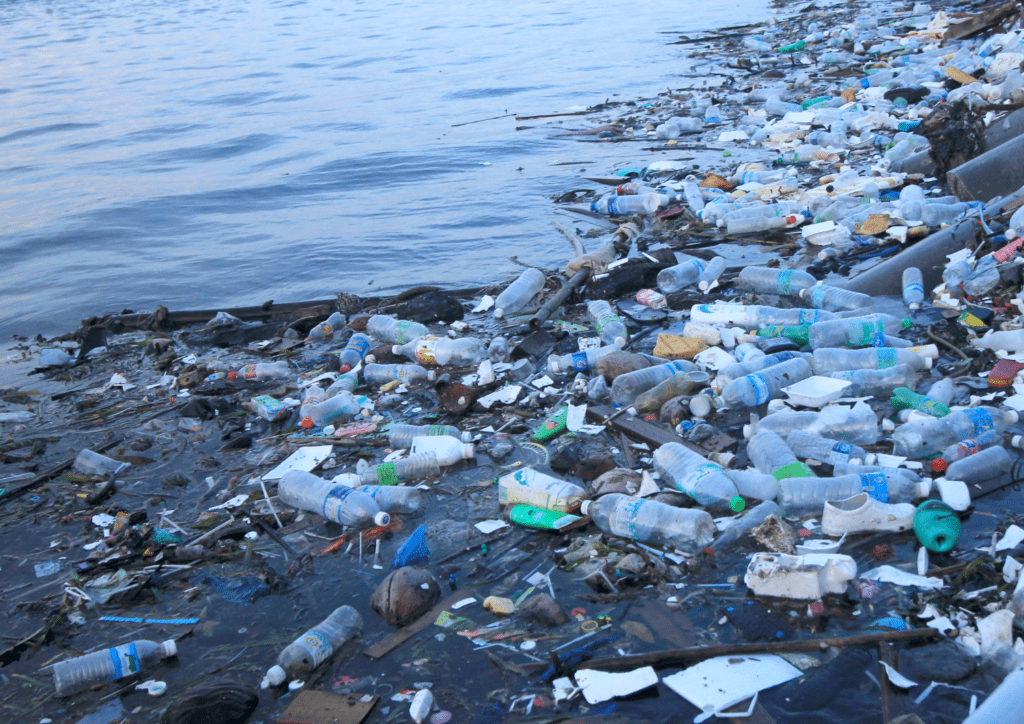This blog is co-authored by Cassie Barker, Senior Program Manager for Toxics
We’re surrounded by plastic. Every day, we touch and eat from hundreds of plastic things – from toys, dishes and clothing to electronics and food packaging. And it’s not just your imagination: the use of plastic in our everyday lives has been growing. This is not a good thing.

It’s the government’s job to protect us and the environment from harmful chemicals in plastic…and they need to get on it
While the plastics industry claims its products are sanitary and safe, the truth is much more complicated. And governments around the world have been slow to catch up to what is an urgent global health and environmental crisis: we are “choking” on plastic – and the chemicals used to make it.
That’s why we’re hopeful that a Global Plastics Treaty – being negotiated right now through the United Nations Environment Programme – will make a difference. We want to see not only limits that reduce the amount of plastic produced and used around the world, but also a plan to tackle particularly harmful plastic products and chemicals. But Canada doesn’t have to wait for a Global Plastic Treaty to act. We must also demand that the federal government get ahead of the curve and do its part at home to protect us from the harms of plastic.
The chemical soup in our everyday products
Virtually all plastic is made from oil, gas or coal. In other words, nasty fossil fuels that pollute the earth and drive global warming from the moment we extract them from the ground all the way to when we refine them for energy or petrochemicals and plastics. Plastic products are a foul chemical soup made from a disconcerting list of ingredients. The byproducts of refining fossil fuels, dangerous chemical additives, and even poisonous heavy metals are all part of the recipe.
The people living close to extraction and refining sites bear the brunt of the environmental and health impacts – including the Indigenous communities living in Treaty 8 territory in northern Alberta and members of the Aamjiwnaang First Nation in what is now known as Chemical Valley in southwestern Ontario.

But regardless of where you live, this is an issue that impacts us all. We are all exposed to these chemicals in products we play with, eat from and wear every day. We recently participated in product testing and were shocked to find high levels of lead and the phthalate DEHP – a harmful plastic additive – in products marketed for children. Popular off-brand shoe charms sold as accessories for Crocs contained 1 per cent lead and more than 13 per cent DEHP by weight. These substances are linked to brain damage and ADHD, liver damage, reproductive harms and other devastating diseases.
Lead has long been confirmed toxic under Canada’s environmental protection law (CEPA), and DEHP was recently added to the list. So why are these substances allowed to be in kids’ shoe charms or any other product?

Regulation of chemicals is too slow to keep us safe
It turns out that more than 16,000 chemicals have been identified in plastic products, and while more than 25 per cent of these are known to be hazardous to human health or the environment, only 6 per cent are regulated on a global scale. Governments around the world, including in Canada, are caught up in the powerful plastics industry. An industry that uses everything at its disposal – including lawyers, PR firms and court systems – to preserve its right to pollute the environment and threaten our health.
And given how many products sold in Canada are imported from other countries, it’s not good enough to simply stop using these chemicals in the products we make here in Canada. We need to tighten the rules to make sure these chemicals are not in any products on Canadian shelves, regardless of where they were made.
The Global Plastics Treaty and Canada’s updated environmental protection law give us the opportunity to speed up the regulation of harmful chemicals in plastics and to protect the people who are being disproportionately impacted by plastic. People like the communities on the frontline of plastic production and vulnerable plastic consumers, like children. Canada also needs to make use of the fact that the law allows for whole classes of problematic chemicals – for example all heavy metals, including lead – to be eliminated all at once instead of trying to play toxic chemical whack-a-mole. We can’t restrict chemicals one by one or the process will stretch out beyond our lifetimes.
Canada has the power to show leadership both at home and abroad. Let’s demand it. Tell the federal government you want to see ambitious action to protect the environment and our health from toxic plastics and chemical additives – in Canada and around the world.










